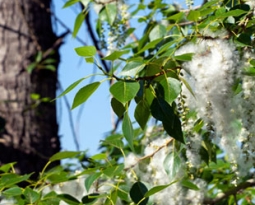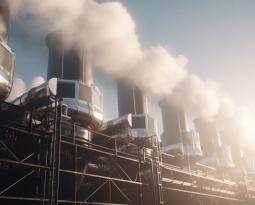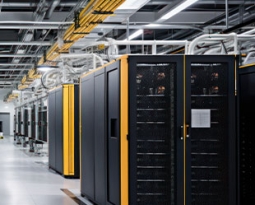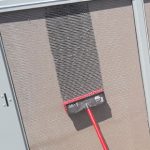Throughout the pandemic, recommendations for reducing the spread of COVID-19 have evolved, and continue to evolve. Recent advice from WHO and the CDC emphasizes the importance of enhanced commercial air filtration as a first line of defense.
As stated by the Journal of Hospital Infection, “Understanding the mechanisms for transmission of severe acute respiratory syndrome coronavirus-2 (SARS-CoV-2) is key to preventing further spread.” Since COVID-19 is spread through the air, and the average American spends about 90% of their lives indoors according to the EPA, proper airflow, which includes increasing clean outdoor air, is paramount to maintaining health.
The Demand for Enhanced Ventilation
Respiratory droplets are omitted when we speak, cough and even breathe. The biggest particles tend to fall quickly to the ground, but smaller ones that are invisible to the naked eye can be carried many feet away and stay in the air for quite some time depending on humidity, temperature and airflow. Yet, many experts downplayed the role of indoor ventilation in reducing COVID-19, instead emphasizing hand washing and surface cleaning and other “hygiene theater” merely because “they do not want to lose face,” said Julian Tang, a clinical virologist and honorary associate professor in the department of respiratory sciences at England’s University of Leicester.
As a result, acknowledging and controlling COVID-19 as an airborne pathogen has not been universally prioritized. Bloomberg News (“Covid Is Airborne, Scientists Say. Now Authorities Think So, Too”) and other sources, however, have recently reported that World Health Organization and the U.S. Centers for Disease Control and Prevention are finally emphasizing the role of airborne respiratory fluids in the spread of COVID-19. But scientists are demanding the organizations go even further by recognizing and stressing the role commercial air filtration and ventilation systems can play in minimizing the spread of the disease.
Scientists from 14 countries are leading the demand for change, asking WHO to extend its air quality guidelines. Leading the charge is Distinguished Professor Lidia Morawska, director of Queensland University of Technology’s (in Brisbane, Australia) International Laboratory for Air Quality and Health, who says, “Mandated building ventilation standards need to include higher airflow, filtration and disinfection rates.”
How Better Commercial Air Filtration Can Help
Cleaning indoor air is the key to COVID-19 reduction. Says the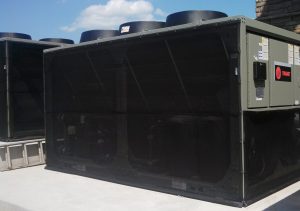 EPA, “Air cleaning and filtration can help reduce airborne contaminants, including particles containing viruses” and “can be part of a plan to reduce the potential for airborne transmission of COVID-19 indoors.” Even better, the wellness benefits of commercial air filtration extend beyond COVID-19 control, and can also eliminate the flu and other respiratory infections, reduce allergic reactions and decrease ‘sick building syndrome.’ For many companies, the advantages of reducing sick leaves and productivity would more than offset the costs of upgrading their ventilation and commercial air filtration systems. It has been estimated that the cost of seasonal influenza in the U.S. alone exceeds $11 billion/year.
EPA, “Air cleaning and filtration can help reduce airborne contaminants, including particles containing viruses” and “can be part of a plan to reduce the potential for airborne transmission of COVID-19 indoors.” Even better, the wellness benefits of commercial air filtration extend beyond COVID-19 control, and can also eliminate the flu and other respiratory infections, reduce allergic reactions and decrease ‘sick building syndrome.’ For many companies, the advantages of reducing sick leaves and productivity would more than offset the costs of upgrading their ventilation and commercial air filtration systems. It has been estimated that the cost of seasonal influenza in the U.S. alone exceeds $11 billion/year.
Purer indoor air starts with improved ventilation. This moves contaminants out, and clean air in. Building managers have not traditionally focused on this area of building operations. But, as reported by Facility Maintenances Decision Magazine (FMD), “Instead of thinking of outside air as something to minimize and control to cut energy use, managers now need to think of it as a positive contributor to improved indoor air quality.”
High-Efficiency Filter Shortages and the PreVent® System
Increased outdoor air, however, also requires better air filtration. Many states are recognizing this. This past summer New York City Governor Andrew Cuomo mandated filter upgrades in all large shopping malls. Unfortunately, this led to a national shortage of high-efficiency filters. For example, as reported by Air Conditioning Heating Refrigeration News, “One contractor posted online that he works with four suppliers for filters, and they all have a lead time of at least 12 weeks for MERV 13 filters.”
So how does a building manager increase ventilation while maintaining commercial air filtration quality, despite a lack of higher efficiency and affordable filters? One way is with an air intake filter, like Permatron’s PreVent® filters. These prefilters simply and quickly attach to the outside of rooftop HVAC equipment, preventing debris from entering the HVAC system in the first place. This keeps the higher efficiency air filters cleaner and lasting longer, so they can work at capturing smaller contaminants like viruses. Air intake filters have plenty of additional benefits too, including prolonging equipment life, increasing their performance efficiency, reducing repair costs, lowering energy bills and reducing the frequency of time-consuming HVAC cleanings (see how much PreVent can save you with our PreVent ROI calculator). Read our white paper Get Smart about Saving Money to learn more about the advantages of air filter screens like PreVent, including how they help protect against infectious diseases like COVID-19.

